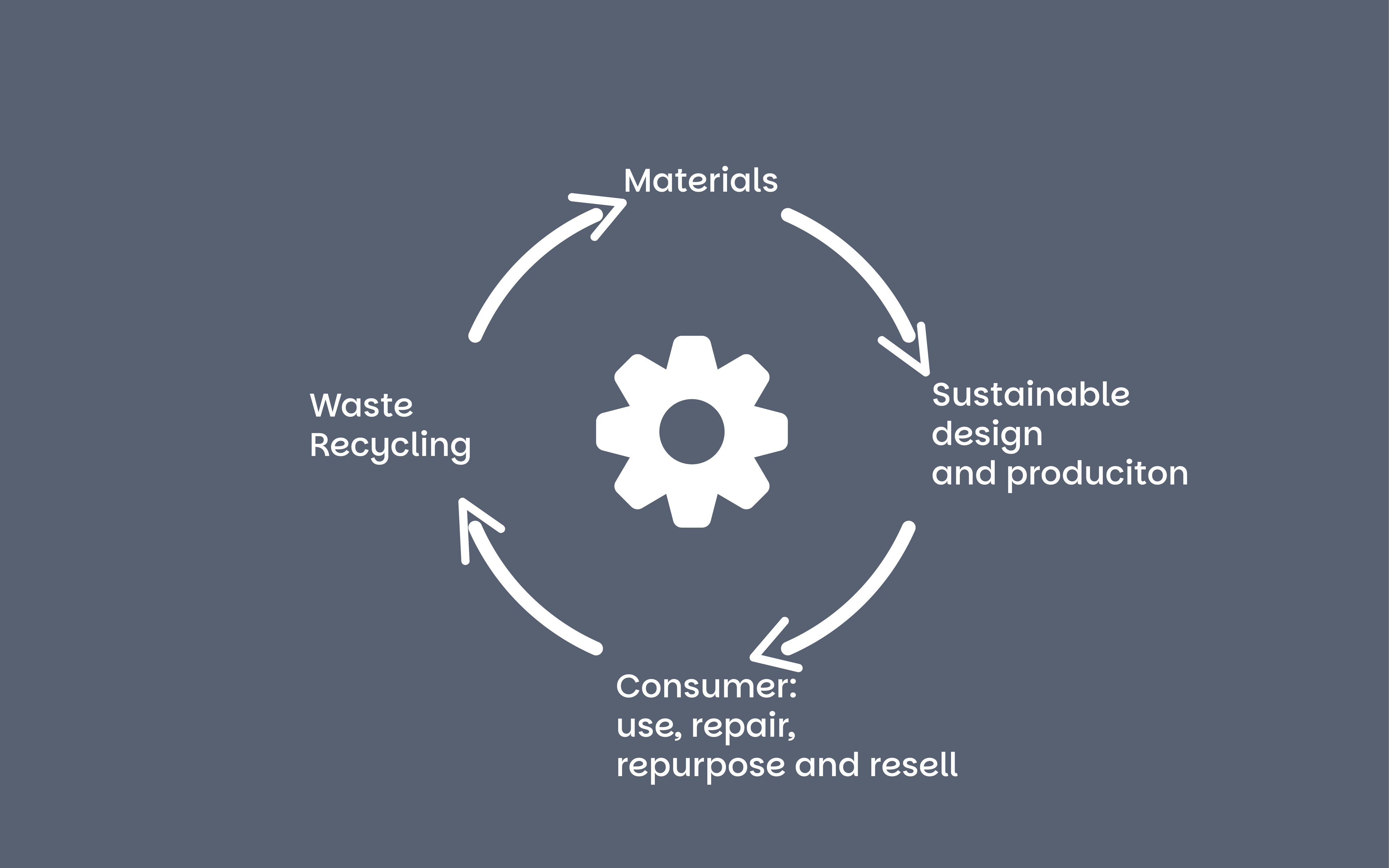What is circular fashion?

Circular fashion represents a transformative approach to sustainability in the fashion industry. It’s about designing out waste, extending the life of garments, and creating systems that loop materials back into production. For beginners, it’s an inspiring gateway to making sustainable choices; for experts, it’s a call to innovate further and lead systemic change.
The problem with linear fashion
The traditional “linear” fashion model—take, make, dispose—is unsustainable. It contributes to:
- Over 92 million tons of textile waste annually (Ellen MacArthur Foundation, A new textiles economy: Redesigning fashion’s future (2017)).
- High carbon emissions from production and transportation (Quantis, 2018).
- Environmental degradation due to toxic dyes, synthetic materials, and water consumption (Water Footprint Network, 2019).
Circular fashion challenges this by re-imagining the lifecycle of clothes. Instead of ending up in landfills, garments and materials become resources for new products.
The principles of circular fashion
1. Design for Longevity: Create garments with durability and timeless appeal.
2. Use Recyclable and Renewable Materials: Opt for fabrics like organic cotton, recycled polyester, or biodegradable textiles.
3. Implement Closed-Loop Systems: Ensure materials can be reclaimed, reprocessed, and reused.
4. Promote Sharing and Reuse: Encourage thrift, rental, or swap platforms to extend the lifecycle of clothing.
5. Embrace Transparency: Build trust with consumers by revealing sourcing, production methods, and end-of-life plans.
Examples of circular fashion in action
Brands Leading the Charge: Patagonia’s repair and reuse program and Stella McCartney’s commitment to zero waste.
Innovative Materials: Companies like Econyl, which recycles ocean plastics into fabrics.
Consumer Movements: The growing popularity of second-hand apps like Depop and Poshmark (ThredUp Resale Report, 2023).
How you can participate
For Beginners
- Shop Smarter: Look for sustainable brands or second-hand stores. - Care for Your Clothes: Wash less often, repair minor damages, and store properly. - Recycle or Donate: Avoid throwing textiles in the trash.
For Supporters of Sustainability
- Speak Up for Change: Advocate for policies that hold brands accountable for managing waste responsibly (European Parliament, 2021).
- Explore New Ideas: Support and learn about innovations like fabrics made from recycled or plant-based materials.
- Educate Others: Spread awareness and inspire action within your networks.
Why it matters
Circular fashion is not just about environmental conservation—it’s about building a future where the fashion industry supports people and the planet. By participating in this movement, we’re redefining luxury, quality, and style with sustainability at the core.
References
- Ellen MacArthur Foundation. (2017). A New Textiles Economy: Redesigning Fashion's Future.
- Quantis. (2018). Measuring Fashion: Insights from the Environmental Impact of the Global Apparel and Footwear Industries Study.
- Water Footprint Network (2019). The Water Footprint of Textiles.
- Patagonia Worn Wear Program.
- Stella McCartney Sustainability Mission.
- Econyl. (2023) Regenerated Nylon.
- Thred Up The Secondhand Market. Resale Report(2023).
- European Parliament. Circular economy: definition, importance and benefits.
Closing thoughts
Whether you’re just starting or deeply immersed in sustainable practices, circular fashion offers something for everyone. It’s a call to rethink, redesign, and regenerate—turning what was once waste into opportunity. Together, we can make fashion a force for good.


